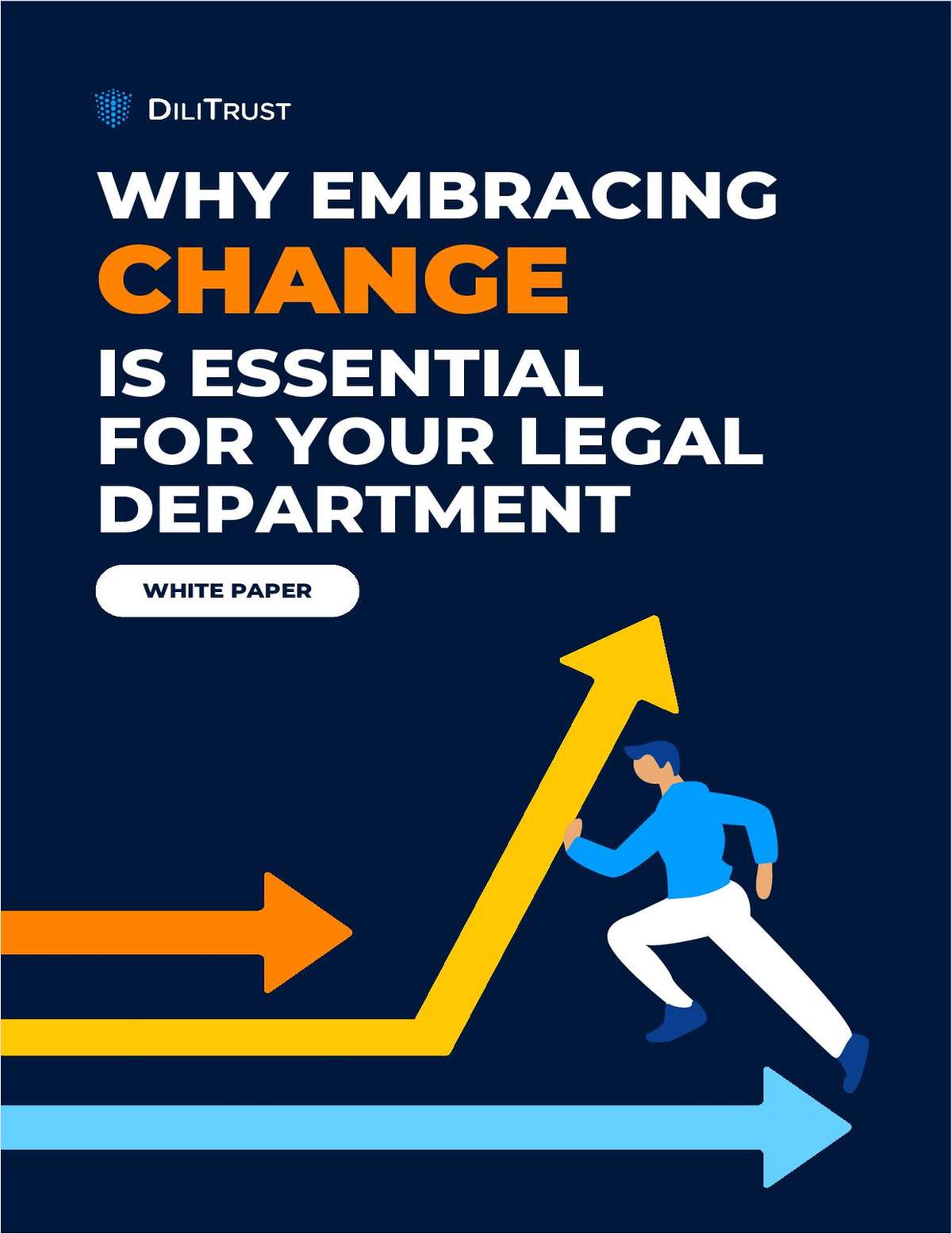Midlevel Associates Are Content but Curious About Their Futures
Our annual Midlevel Associates Survey shows most are pleased with their firms, but they're eager for a peek behind the curtain.
August 26, 2018 at 06:00 PM
14 minute read
The original version of this story was published on The American Lawyer

Midlevel associates in Big Law are as happy as ever. It seems the only thing that could make them happier is a peek behind the curtain.
Associates in their third, fourth and fifth years gave an average composite score of 4.27 out of 5 on our annual Midlevel Associates Survey, a slight increase from 4.26 in 2017. That number has been on the rise for several years, though gains were incremental this year and last.
More than 5,000 associates from Am Law 200 and Global 100 firms completed this year's survey. Associates gave scores of 1 to 5 in a dozen categories, and more than half of the category averages remained unchanged from 2017 to 2018. Midlevels continue to find their work interesting and satisfying, with average scores of 4.47 and 4.37 in those categories. And asked to score their workplace overall, they gave an average score of 4.37.
The category with the highest average score was associate relations, at 4.57, even though that was the only category where average associate satisfaction decreased, from 4.59 last year.
The greatest increase in associate satisfaction was in management openness, where the average score went from 4.02 to 4.07. Still, the average score for that category remains the second-lowest, next to communication about partnership, on which midlevels gave their firms an average score of 3.71.
The top firm for midlevel satisfaction is Schulte Roth & Zabel, which hopped up from seventh last year, and 78th the year before that. O'Melveny & Myers was at second again, followed by Paul Hastings at third and Orrick, Herrington & Sutcliffe at fourth. Cadwalader, Wickersham & Taft rounded out the top five, moving up eight places in the rankings from last year.
Cozen O'Connor, which was first in the rankings last year, did not participate in the 2018 survey.
Law firm consultant Marcie Borgal Shunk, of The Tilt Institute, says she's not surprised that some associates see room for improvement when it comes to topics like communication.
“Transparency tends to be a particular challenge for law firms … particularly with performance and compensation,” she says. “Historically, that tended to work because the path to partnership and what it took to be successful was a little more homogeneous.”
Now, she says, the pathway to success and partnership is a bit more complex, and it's difficult for anyone, not just at the associate level, to know what is expected of them.
“It used to be that if you just worked hard and you were a good citizen, you would make partner,” says Ru Bhatt, managing director of the associate practice group at Major, Lindsey & Africa. But now, other factors like the ability to develop business are a part of the equation, and that can be tricky for someone without the partner title.
“To the extent that law firms are able to rectify some of these transparency challenges and role clarity, that will improve the associate experience of culture,” Borgal Shunk says.
Wanted: Clear Expectations
A fourth-year in San Francisco put it simply: “Transparency goes a long way toward quelling associate anxiety.”
Every firm that dropped 30 or more places in the rankings had a score below 4 for communication about partnership and all but one scored below 4 for management openness.
The firm in the top 10 with the greatest improvement in satisfaction rankings, Shearman & Sterling, showed the most change in these two categories. Its score for management openness went from 3.86 to 4.45, and its score for communication about partnership went from 3.39 to 4.13.
Senior partner David Beveridge notes that he took on his role early this year, and as part of the management transition, he has been meeting more with lawyers throughout the firm, including associates, to discuss strategy.
“There may be some correlation there,” he says. “I'm pretty open to telling people how we're doing.”
And even some of the happiest associates found problems with how their firms map out lawyer careers—among the top 20 firms in the satisfaction rankings, seven scored below 4 for communication about partnership.
While the majority of respondents said they consider themselves to be on the partner track, more than 27 percent of respondents (including one-third of third-years) said they're simply not sure whether they're on the partner track.
“Associates need to feel that the partners are invested in them and their careers,” a third-year in Philadelphia said. “More mentorship, opportunities to discuss career goals with partners, and transparency concerning partnership prospects would be greatly appreciated by associates.”
Respondents also said they want a better understanding of how they're evaluated, and how their compensation is determined. It's also unclear at times whether certain hours will be considered billable, they said, which often affects bonuses.
“It seems that the junior and midlevel associates often don't know what is truly expected of them, whether they are meeting expectations, and how well they are performing at the firm,” a third-year in Washington, D.C., said.
But they're not just curious about their own performance. They want to know what their firms' futures hold, and what the strategies are.
“Trust that your associates can handle the sausage-making process of the firm and be forthcoming with details about decisions and transparent with the reasons behind policies and firm actions,” a third-year in New York said.
Having an awareness of a law firm's greater strategy is key to motivation, says Christian Lang, editor of Blacklines & Billables, a blog and podcast for law firm associates.
“It's one thing to feel like you are in a foxhole with somebody, you're in the trenches together … that can be empowering and motivating,” Lang says. “If you don't know what's going on, you don't understand how what you're doing fits in.”
Still, Lang notes, associates who want greater guidance on how to become a partner may be missing the point. The happiest and most successful partners, he says, “didn't get there by a checklist of what you do to become partner. They got there through sort of a self-selection mechanism.” Instead, Lang says, associates who want to be on the partnership track should show their interest and ask senior partners for guidance.
There's another reason firms avoid providing a checklist for aspiring partners, Bhatt says: They don't want to make any promises. If an associate were to follow all the steps and still come up short of partner, that would cause bigger problems, he says.
“Firms have to be somewhat murky in that process because obviously it's opening up another can of worms,” Bhatt says.
Finding Balance in Big Law
Only 5.1 percent of midlevels said they are currently seeking a new job. Another 49 percent said while they are not actively looking, they would consider an optimal opportunity. Asked why they might consider leaving their current firm, work-life balance was the overwhelming leader, with more than half of respondents saying that was their main motivator. Other popular reasons for a potential departure were: making a geographic change; not making partner; pursuing higher earnings; and entering public service.
Borgal Shunk says law firm work-life balance, or lack thereof, can be traced back to the billable hour, which incentivizes working long hours rather than pursuing the best possible result for a client.
“As long as you're tied to productivity instead of outcome … you're going to have trouble with work-life balance,” she says.
And that, too, comes back to transparency and communication, she says. Firms often depend on the billable hour to evaluate lawyers because they have no better objective performance measure.
“Law firms have a ways to go in terms of performance management and getting to a place where they have clarity around what is expected of people … then incentivizing and rewarding them in alignment with the expectations,” Borgal Shunk says.
It should be noted that in the last few months, a number of large law firms have revamped their associate review and training programs, moving away from annual performance reviews. Some are now offering billable credits for innovation initiatives and, in some instances, adding transparency around their partnership track. But there are other, related areas associates are focused on.
In their open-ended responses, associates called out several work-life issues important to them: the ability to work remotely; freedom to take vacation without guilt; and supportive conditions for parents, including parental leave and flexible scheduling policies.
“Saying that Big Law might not be a good fit for an individual who desires true work-life balance just won't cut it anymore,” a third-year in New York said. “Individuals who have self-respect and self-love tend to quit as a result of lack of work-life balance and eventually depart the firm.”
But it's not all bad news. In their open-ended responses, more than two dozen associates said they were pleasantly surprised by the work-life balance their law firm jobs afford.
And two associates at one firm specifically highlighted strides made in flexibility for parents.
“The flexibility and support I received and continue to receive from the firm—during pregnancy, maternity leave, and upon return to work full-time—has made an enormous impact on my overall satisfaction,” Courtney Henson, a fifth-year in Snell & Wilmer's Tucson, Arizona, office, said.
Another Snell & Wilmer lawyer, fourth-year Danny Green in Salt Lake City, praised the firm's paternity leave policy, which allowed him to take 12 weeks, with his billable hours prorated to account for that time. “I received no overt or subtle pushback for taking that much time off,” he wrote.
In their plea for work-life balance, associates aren't just asking to work less. What they really want is predictability in their schedules, Bhatt says. That's difficult in a service-oriented business, he says, but something as simple as encouraging remote work can make a big difference.
“Associates understand they need to work very hard. The flexibility to do it from wherever they are is what they're looking for,” Bhatt says.
Additionally, Bhatt notes, the current midlevel associates entered law school after the recession took hold, and are aware that law firms can and will cut jobs when economic conditions call for it. So they want more in life than their work, and they want their employers to understand that.
“I've had associates, when they were trying to decide between several firms, come to me and say, 'I want Firm A because they were the only firm that asked me what I like to do outside the office,'” he says.
Money Matters
Respondents gave an average score of 4.29 for their benefits and compensation, the same as in 2017. Likewise, salaries and bonuses for midlevels were relatively flat from 2017 to 2018, according to respondents.
It should be noted that the survey was conducted before June of this year, when a wave of Big Law associate raises brought first-year salaries to $190,000 at top-paying firms, and boosted pay for many midlevels at those firms, too.
Based on survey results, fourth-years fared best in compensation, with a 2 percent increase in base salary, at $220,906, and the average fourth-year bonus growing 4.1 percent to $45,034.
At $199,004, the average third-year salary barely changed at all, and bonuses went up 2.2 percent, to $24,712.
And for the fifth-year class, average salary was essentially flat at $238,664, and the average bonus decreased by less than 1 percent, to $55,494.
That all comes after the 2017 survey showed salary increases of 10 to 11 percent at each level, and where associate satisfaction with benefits and compensation increased more than any other category. That survey was the first to show the effects of widespread 2016 raises, which brought first-year salaries to $180,000 at top-paying firms.
Investments in associate salaries and benefits are less about making midlevels happy than about recruiting top-notch law school graduates, Bhatt says.
“Law firm talent is always going to be created at the junior level. That's where you can cultivate that talent and it needs to be nurtured,” he says.
Still, you can't buy happy associates. The market leader in associate salaries, Cravath, Swaine & Moore, came in 93rd on this year's associate satisfaction rankings, an improvement of two places over last year. While Cravath scored high in many categories, its scores for management openness and communication about partnership were both below 3.
Good benefits or a big bonus can help keep lawyers going during times of intensity at work, says Lang, who used to be an associate at Davis Polk & Wardwell. But noticing their work and giving positive feedback where due is just as important.
Lang recalls a time when a senior partner gifted him a high-end bottle of scotch after they closed an important deal, and praised him for good work. The scotch was worth about $300, Lang says, but the gesture may have motivated him more than a $30,000 raise would have.
Rates Up, and Hours Too
Higher salaries call for higher rates. But that hasn't taken away from the amount of work midlevels are doing. Respondents recorded more hours this year than last, and that includes both billable and nonbillable work.
Average hours billed were 2,010 for third-years, 2,030 for fourth-years and 2,042 for fifth-years. For each class, that represented an increase of just a few hours.
But nonbillable hours were up by a greater proportion, especially for third-years. They worked 331 nonbillable hours on average (compared to 313 in 2017). Fourth-years had 344 nonbillable hours on average, and fifth-years had 320.
However, the amount of money firms charged for each midlevel hour billed was up considerably. The average billing rates were $682 for third-years, $747 for fourth-years and $748 for fifth-years. Compared to 2017, that shows an increase of $40, $81 and $34, respectively.
“The salaries have gone up quite a bit. Firms do have to recoup that cost. The higher billing rates do play into that,” Bhatt says.
In addition, firms are increasingly asking their associates to specialize earlier in their careers, Bhatt says. That allows them to charge more for the associates' time.
About the Survey
The Midlevel Associates Survey is conducted by ALM Intelligence on behalf of The American Lawyer. Am Law 200 and Global 100 firms were invited to participate in the survey. This year, we received responses from 5,270 midlevel associates, and ranked 102 firms.
Associates rated their firms on a 5-point scale, with 1 being the lowest possible score (very dissatisfied) and 5 the highest (very satisfied).
A firm's national score is the average of 12 questions on interest and satisfaction; levels of work; benefits and compensation; relations between associates and between partners and associates; training and guidance; management openness about firm strategies and partnership chances; the firm's attitude toward pro bono work; its billable hours policy; and the likelihood of the associate being at the firm in two years.
A firm can choose which offices take part, so the number of eligible midlevels does not always reflect the size of firmwide midlevel classes.
To receive a place in our city ranking, a firm must have at least five completed surveys in its office in that city. The same 12 questions are calculated for individual cities or markets to determine branch scores and rankings. The survey is anonymous and confidential.
Email: [email protected]
This content has been archived. It is available through our partners, LexisNexis® and Bloomberg Law.
To view this content, please continue to their sites.
Not a Lexis Subscriber?
Subscribe Now
Not a Bloomberg Law Subscriber?
Subscribe Now
NOT FOR REPRINT
© 2024 ALM Global, LLC, All Rights Reserved. Request academic re-use from www.copyright.com. All other uses, submit a request to [email protected]. For more information visit Asset & Logo Licensing.
You Might Like
View All
Legal Departments Gripe About Outside Counsel but Rarely Talk to Them
4 minute read
As Profits Rise, Law Firms Likely to Make More AI Investments in 2025

'Serious Disruptions'?: Federal Courts Brace for Government Shutdown Threat
3 minute read
'So Many Firms' Have Yet to Announce Associate Bonuses, Underlining Big Law's Uneven Approach
5 minute readTrending Stories
- 1Call for Nominations: Elite Trial Lawyers 2025
- 2Senate Judiciary Dems Release Report on Supreme Court Ethics
- 3Senate Confirms Last 2 of Biden's California Judicial Nominees
- 4Morrison & Foerster Doles Out Year-End and Special Bonuses, Raises Base Compensation for Associates
- 5Tom Girardi to Surrender to Federal Authorities on Jan. 7
Who Got The Work
Michael G. Bongiorno, Andrew Scott Dulberg and Elizabeth E. Driscoll from Wilmer Cutler Pickering Hale and Dorr have stepped in to represent Symbotic Inc., an A.I.-enabled technology platform that focuses on increasing supply chain efficiency, and other defendants in a pending shareholder derivative lawsuit. The case, filed Oct. 2 in Massachusetts District Court by the Brown Law Firm on behalf of Stephen Austen, accuses certain officers and directors of misleading investors in regard to Symbotic's potential for margin growth by failing to disclose that the company was not equipped to timely deploy its systems or manage expenses through project delays. The case, assigned to U.S. District Judge Nathaniel M. Gorton, is 1:24-cv-12522, Austen v. Cohen et al.
Who Got The Work
Edmund Polubinski and Marie Killmond of Davis Polk & Wardwell have entered appearances for data platform software development company MongoDB and other defendants in a pending shareholder derivative lawsuit. The action, filed Oct. 7 in New York Southern District Court by the Brown Law Firm, accuses the company's directors and/or officers of falsely expressing confidence in the company’s restructuring of its sales incentive plan and downplaying the severity of decreases in its upfront commitments. The case is 1:24-cv-07594, Roy v. Ittycheria et al.
Who Got The Work
Amy O. Bruchs and Kurt F. Ellison of Michael Best & Friedrich have entered appearances for Epic Systems Corp. in a pending employment discrimination lawsuit. The suit was filed Sept. 7 in Wisconsin Western District Court by Levine Eisberner LLC and Siri & Glimstad on behalf of a project manager who claims that he was wrongfully terminated after applying for a religious exemption to the defendant's COVID-19 vaccine mandate. The case, assigned to U.S. Magistrate Judge Anita Marie Boor, is 3:24-cv-00630, Secker, Nathan v. Epic Systems Corporation.
Who Got The Work
David X. Sullivan, Thomas J. Finn and Gregory A. Hall from McCarter & English have entered appearances for Sunrun Installation Services in a pending civil rights lawsuit. The complaint was filed Sept. 4 in Connecticut District Court by attorney Robert M. Berke on behalf of former employee George Edward Steins, who was arrested and charged with employing an unregistered home improvement salesperson. The complaint alleges that had Sunrun informed the Connecticut Department of Consumer Protection that the plaintiff's employment had ended in 2017 and that he no longer held Sunrun's home improvement contractor license, he would not have been hit with charges, which were dismissed in May 2024. The case, assigned to U.S. District Judge Jeffrey A. Meyer, is 3:24-cv-01423, Steins v. Sunrun, Inc. et al.
Who Got The Work
Greenberg Traurig shareholder Joshua L. Raskin has entered an appearance for boohoo.com UK Ltd. in a pending patent infringement lawsuit. The suit, filed Sept. 3 in Texas Eastern District Court by Rozier Hardt McDonough on behalf of Alto Dynamics, asserts five patents related to an online shopping platform. The case, assigned to U.S. District Judge Rodney Gilstrap, is 2:24-cv-00719, Alto Dynamics, LLC v. boohoo.com UK Limited.
Featured Firms
Law Offices of Gary Martin Hays & Associates, P.C.
(470) 294-1674
Law Offices of Mark E. Salomone
(857) 444-6468
Smith & Hassler
(713) 739-1250








